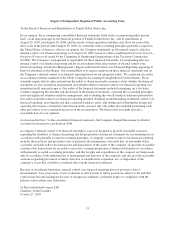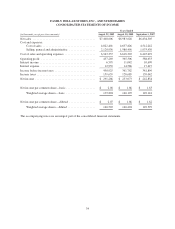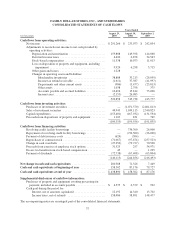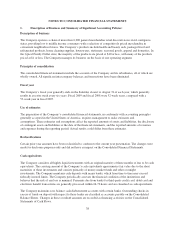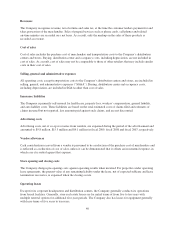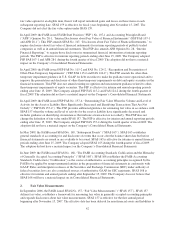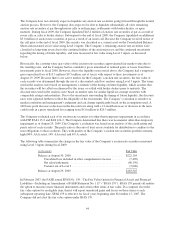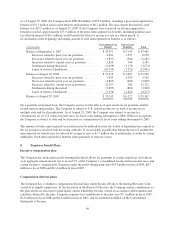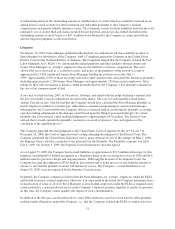Family Dollar 2009 Annual Report Download - page 49
Download and view the complete annual report
Please find page 49 of the 2009 Family Dollar annual report below. You can navigate through the pages in the report by either clicking on the pages listed below, or by using the keyword search tool below to find specific information within the annual report.The Company accounts for store leases in accordance with Statement of Financial Accounting Standards
(“SFAS”) No. 13, “Accounting for Leases” and related interpretations. For purposes of recognizing incentives,
premiums and minimum rental expenses on a straight-line basis over terms of the leases, the Company uses the
date of initial possession to begin amortization, which is generally when the Company enters the space and
begins to make improvements in preparation for intended use. For tenant improvement allowances and rent
holidays, the Company records a deferred rent liability at the inception of the lease term and amortizes the
deferred rent over the terms of the leases as reductions to rent expense on the Consolidated Statements of
Income.
Certain leases provide for contingent rental payments based upon a percentage of store sales. The Company
accrues for contingent rental expense as it becomes probable that specified sales targets will be met in
accordance with Emerging Issues Task Force (“EITF”) Issue 98-9, “Accounting for Contingent Rent.”
Capitalized interest
The Company capitalizes interest on borrowed funds during the construction of property and equipment in
accordance with SFAS No. 34, “Capitalization of Interest Cost.” The Company capitalized $1.2 million, $0.8
million and $1.0 million of interest costs during fiscal 2009, fiscal 2008 and fiscal 2007, respectively.
Income taxes
The Company records deferred income tax assets and liabilities for the expected future tax consequences of
temporary differences between the financial reporting bases and the income tax bases of its assets and liabilities.
The Company estimates contingent income tax liabilities based on the methodology prescribed in Financial
Accounting Standards Board (“FASB”) Interpretation No. 48, “Accounting for Uncertainty in Income Taxes”
(“FIN 48”). See Note 7 for more information on the Company’s income taxes and FIN 48.
Stock-based compensation
The Company recognizes compensation expense related to its stock-based awards based on the grant-date fair
value estimated in accordance with SFAS No. 123 (revised 2004) “Share-Based Payment” (“SFAS 123R”). The
Company utilizes the Black-Scholes option-pricing model to estimate the grant-date fair value of its stock option
awards. The grant-date fair value of the Company’s performance share rights awards is based on the stock price
on the grant date. Compensation expense for the Company’s stock-based awards is recognized on a straight-line
basis, net of estimated forfeitures, over the service period of each award. See Note 10 for more information on
the Company’s stock-based compensation plans.
New accounting pronouncements
In September 2006, the FASB issued SFAS No. 157, “Fair Value Measurements” (“SFAS 157”). SFAS 157
defines fair value, establishes a framework for measuring fair value in generally accepted accounting principles
and expands disclosures about fair value measurements. SFAS 157 is effective for the first annual period
beginning after November 15, 2007. The effective date has been delayed for non-financial assets and liabilities to
the first annual period beginning after November 15, 2008. The Company adopted SFAS 157 during the first
quarter of fiscal 2009. See Note 2 to the Consolidated Financial Statements included in this Report for more
information on the Company’s adoption of SFAS 157.
In February 2007, the FASB issued SFAS No. 159, “The Fair Value Option for Financial Assets and Financial
Liabilities—Including an Amendment of FASB Statement No. 115” (“SFAS 159”). SFAS 159 permits all entities
the option to measure many financial instruments and certain other items at fair value. If a company elects the
41




